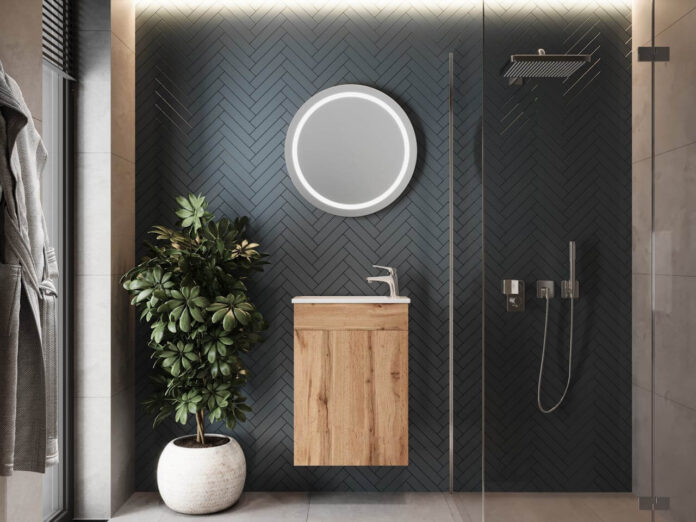In Minnesota, where winters cling for too long and spring arrives coated in pollen, a lot of homes double as allergy traps. Windows stay shut most of the year. Basements flood. Carpets cling to dust and pet dander like it’s their job. You try your best to stay on top of it—maybe you vacuum more than you should, maybe you crack a window even when it’s still cold, just to get a break. But it’s not always enough. Allergies don’t wait. And most people don’t realize how many small home changes can cut them down.
Focus on Bedding
You sleep for a third of your life, sometimes more if you’re exhausted or sick. That’s a long time to be nose-to-mattress. Dust mites love pillows and mattresses. Same goes for mold if your room stays humid. Wash all bedding weekly in hot water, not warm. Use allergen-proof covers on pillows and mattresses. Most people skip those covers, thinking it’s unnecessary. It’s not. They make a difference, even if it doesn’t seem like it. Avoid feather pillows and comforters. They’re cozy, sure, but they turn fast.
Get Serious About Duct Cleaning
A lot of homes around Hibbing haven’t had their ducts cleaned in years. Sometimes ever. Out of sight, out of mind. But over time, those ducts collect dust, pollen, mold spores, and even bits of insulation or construction debris. Every time your furnace kicks on—or your AC—you’re spreading that stuff through every room. If you’ve tried everything else and allergies still hit hard, duct cleaning in Hibbing, MN is one of those last-mile fixes worth doing. Reputable local services have the right tools and experience. It’s not a DIY job. It takes time and care to do it right.
You’ll probably think it’s unnecessary. Or too expensive. But people who’ve had it done often say they noticed a real difference. Less sneezing. Less dust. Fewer mornings waking up congested. Especially if your system hasn’t been cleaned in a decade or more. Do some research. Read reviews. Pick someone local and well-rated. Duct cleaning won’t solve every problem, but it clears out the buildup most people never think about. That’s a big deal in a state where homes stay shut tight for six months straight.
Keep Humidity In Check
Humidity helps mold. Too much of it turns your home into a breeding ground. That old bathroom fan that barely works? Replace it. If your windows fog up in the morning, you’ve probably got a problem. Buy a hygrometer—they’re cheap—and keep humidity between 30% and 50%. In basements, use a dehumidifier. It’ll take some trial and error. You might forget to empty the tank a few times. That’s fine. Just get into the habit. Mold doesn’t wait, and once it spreads, it’s expensive to fix.
Reduce Clutter, Even If It Hurts
Clutter gathers dust. Everyone has that room or shelf filled with stuff they don’t really use. Books, picture frames, knick-knacks—they’re traps for allergens. It’s hard to admit when something’s just taking up space. You don’t need to throw everything away, but if you’re sneezing more than usual, it might be time to clean house. Donate what you can. Store sentimental things in closed boxes, not open bins. Less stuff out means fewer places for allergens to settle. It also makes cleaning faster, which makes it easier to stick with.
Keep Pets Groomed and Their Areas Clean
This one’s tough. Pets are family. You don’t want to ban them from the bed or couch. But they shed dander everywhere, and it clings. Regular grooming—brushing them outside if you can—really helps. Bathing once a month is ideal, but good luck with that if your cat’s in charge. Vacuum where they sleep. Wash their beds often. Keep a lint roller near where you sit. These are all small things, but they add up. Pet allergies are stubborn. Even if you’re not allergic, guests might be. Don’t wait until someone’s wheezing on your couch.
Clean High-Touch Areas Often
You wipe countertops. You mop floors. But what about door handles, remotes, light switches? These places collect skin cells, oils, dust, and all the small stuff that floats around. People forget them. They don’t look dirty, so they get skipped. Wipe them weekly with a damp microfiber cloth. No need for harsh cleaners. Just something simple that pulls dust and particles away. If you’ve got blinds, clean those too. They catch everything and rarely get touched until they’re visibly gross. Don’t wait that long.
Avoid Over-Fragranced Products
It’s easy to get hooked on scented cleaners, sprays, candles. You associate those smells with clean. But a lot of them just cover things up and make allergy symptoms worse. Some people react more to fragrances than to dust. That plug-in freshener you’ve had for six months might be giving you headaches or stuffy sinuses without you realizing it. Switch to unscented or naturally scented products. Look for ones labeled “fragrance-free” instead of “unscented”—they’re not the same thing. It won’t smell like a spa, but your breathing might improve.
Do One Thing at a Time
It’s tempting to try everything at once. You buy three air purifiers, rip up the carpet, deep-clean the whole house, and spend a weekend scrubbing mold you didn’t know existed. But you burn out. Instead, just fix one thing each week. Change filters this week. Wash all bedding next week. Set reminders. Track what helps. You’ll miss things. You’ll forget to follow up. That’s fine. It’s not about perfection. It’s about reducing enough triggers that your body gets a break. Every step cuts the load. That’s the point.
Allergy control isn’t glamorous. It’s constant, and it’s boring, and sometimes it feels like nothing’s working. But it does get better. Homes can change. And even the stubborn ones in northern Minnesota can be made easier to live in—one small fix at a time.



